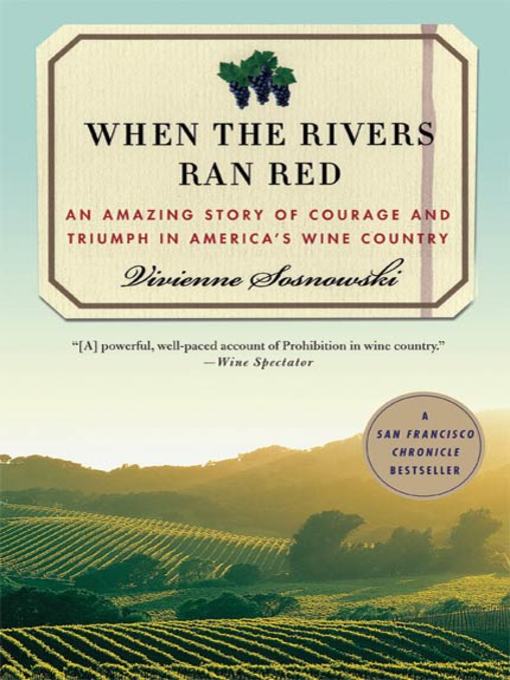
When the Rivers Ran Red
An Amazing Story of Courage and Triumph in America's Wine Country
- اطلاعات
- نقد و بررسی
- دیدگاه کاربران
نقد و بررسی

April 15, 2009
How the Napa and Sonoma Valley wineries survived Prohibition.
California's wine country is an oft-romanticized region, and newspaper executive Sosnowski, a first-time author, seems to have fallen sway to its well-advertised charms in her attempt to showcase the region's fortitude during Prohibition. While it is true that many families suffered mightily during that period (1919–33), as the entire region's economy was centered around winemaking, the author's narrative lacks the cohesive direction necessary to give the wineries' plight sufficient dramatic tension. Instead of focusing on the personalities and families behind a few key wineries and how they survived those brutal years—from such obvious dodges as bootlegging to ingenious tactics like the sale of raw grapes for fermenting in private homes—Sosnowski slows the pace with a dry rehashing of facts and figures on everything from the weekly fluctuation of grape prices to the nuances of licensing Prohibition agents. Her empathy for the winemakers—many of them Italian immigrants who brought their craft over from the old country—is evident, but she has difficulty channeling her sentiment into sufficiently energetic prose. Even stealthy midnight shipments of casks and grapes under the noses of Prohibition officials fail to ignite much suspense. While it's refreshing to read a history of Prohibition not focused exclusively on the mob and the speakeasies of New York and Chicago, the colorful personalities and dark excitement unique to this period are lost.
Copiously researched, but this particular vintage lacks complexity and depth.
(COPYRIGHT (2009) KIRKUS REVIEWS/NIELSEN BUSINESS MEDIA, INC. ALL RIGHTS RESERVED.)

June 1, 2009
Speakeasies and Keystone Cops come to mind when we think of the Prohibition Era (191933). Few of us imagine what the 18th Amendment meant to families and individuals whose livelihood depended on growing grapes and making wine. Sosnowski, editorial director of the "San Francisco Examiner" and two other newspapers, collected meticulous research to chronicle how the banning of alcoholic beverages affected the grape growers and vintners of California's Napa and Sonoma region. Though she describes many brutal and abusive raids on farms and wineries by goverment agents, business as usual was surprisingly common. The task of preventing people from enjoying the pleasure of wine was daunting. Few agents were above corruption, and the Napa and Sonoma winemakers, compelled by economics, became very clever in disguising their product and its storage. From shipping grapes across country for "legal" home wine making to running wine to San Francisco in the middle of the night, most did whatever they could to keep from going bankrupt. VERDICT Sosnowski's reconstruction of actual events reads like a novel. This tale of a little-known aspect of American history will be enjoyed by Californians, as well as oenophiles and history buffs.Ann Weber, Bellarmine Coll. Prep., San Jos, CA
Copyright 2009 Library Journal, LLC Used with permission.

May 1, 2009
When the U.S. Constitution was amended in 1919 to ban alcoholic beverages across the nation, few places were as devastated as the Northern California counties of Sonoma and Napa. Immigrant families, many of them Italian, had established productive vineyards. True, they did not yet claim their wines equal to Europes finest bottlings, but they were patiently waiting for American public taste to mature. Now they faced utter ruin, compelled to dump vats of valuable aging wines into streets, sewers, and rivers. As the 1920s rolled forward, these vineyards were in some cases pulled up and the land turned to other crops. Often bunches of ripe fruit were quietly shipped away, the growers able to sell grapes but deprived of the final vinification of the juice. Sosnowski records in heavily researched detail the real effects of Prohibition on people who wished only to produce sound wine.(Reprinted with permission of Booklist, copyright 2009, American Library Association.)




دیدگاه کاربران